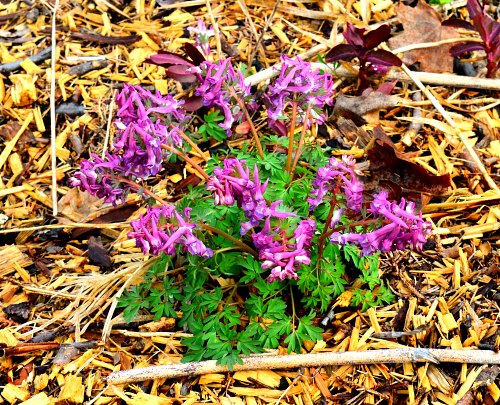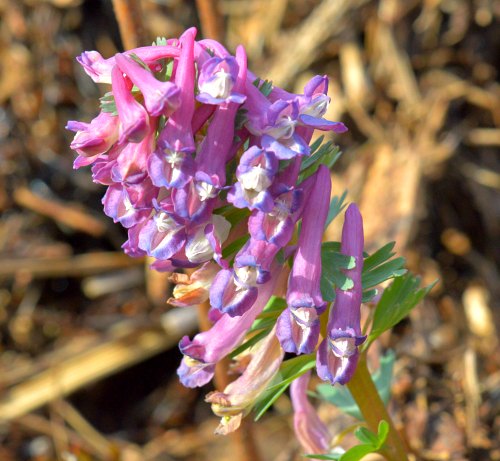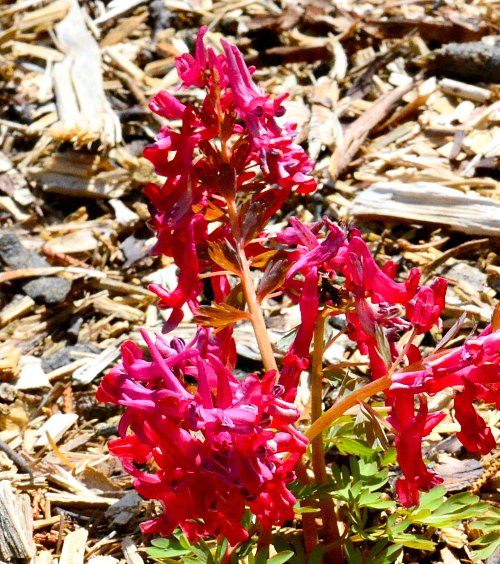Plant of the Month for May, 2017

(kor-ID-ah-liss SOL-id-uh)
General Information:
Corydalis solida is a great spring ephemeral that brings an unusual color to the garden at this time of year. How many of our spring flowers are red, pink or purplish red? Spread them around the garden between larger plants and enjoy them while the larger plants are still sleeping. By the time they grow to any size, C. solida will have gone underground for a summer snooze.

Corydalis solida:photo by Robert Pavlis
This plant is known by the common names; fumewort, spring corydalis, bird-in-a-bush and solid-tubered corydalis. It grows from a bulb, although many websites consider it to be a tuber. After the leaves die back the bulbs can be dug up and moved around the garden. The plant seems to do best if split on a regular basis. It will self- seed a bit but it never seems to be in the way and it can be easily pulled out if you don’t want it.
Spring corydalis is pollinated by the hairy-footed flower bee (Anthophora plumipes) which is native to Europe, Near East and North Africa. It has also been introduced into North America. The petals are arranged so that the flower is self-sterile, but the bee is able to transfer pollen from another flower when it visits to take a drink of nectar from the back of the spur. The flower is also visited by bumblebees which drink the nectar after biting a hole in the back of the flower.

Corydalis solida:photo by Robert Pavlis
Seeds are produced with an attached white elaisome which attracts ants. After eating the lipid and protein rich elaisome, the ants discard the seed helping with distribution around the garden. Seeds will produce a variety of colors and will not come true from named cultivars.

Corydalis solida 'George Baker':photo by Robert Pavlis
(Comment from ORG&HPS website administrator... There is also a vibrant deep purple cultivar called 'Purple Bird'. See its photo posted March 30 on Facebook)
Life Cycle: perennial bulb
Height: 20 cm (9in)
Bloom Time: spring
Natural Range: Northern Europe, Asia
Habitat: woodlands and woodland edges
Synonyms: Corydalis halleri, Corydalis bulbosa
Cultivation:
Light: part shade to full shade
Soil: humus rich soil
Water: medium to wet
USDA Hardiness Zone: 3 - 8
Propagation: seed, division of bulbs
Seedex availability (ORG&HPS annual Seed Exchange): frequently
